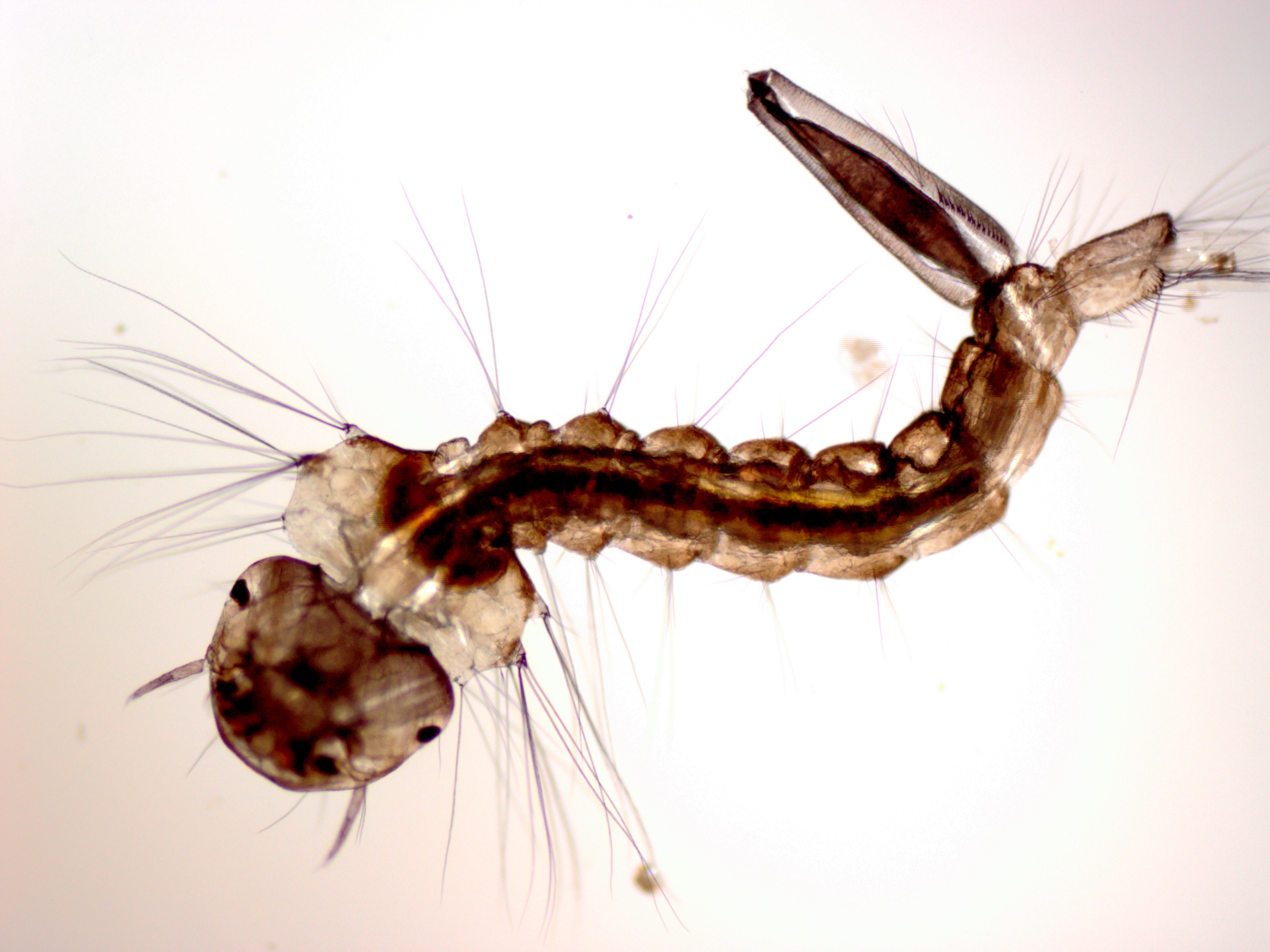Mosquito larvae, the immature pre-pupal stage of mosquitoes, bear little resemblance to their adult counterparts. These aquatic creatures are highly adapted for life in standing water, exhibiting unique morphologies and behaviors that are essential for their survival and metamorphosis. Identifying mosquito larvae accurately is crucial for effective mosquito control and disease prevention. This article provides a comprehensive overview of what mosquito larvae look like, covering various aspects of their physical characteristics, distinguishing features, and habitat preferences.
Overall Morphology: A Vermiform Existence
Mosquito larvae possess an elongated, vermiform (worm-like) body. The body is typically segmented, composed of a head, thorax, and abdomen. The exoskeleton is generally translucent or semi-transparent, allowing for observation of internal structures. Their size varies depending on the species and developmental instar, typically ranging from a few millimeters in early instars to over a centimeter in later instars. This translucency is an asset when observing them in situ, as you can sometimes discern their developing organs.
Cephalic Capsule: Sensory and Feeding Apparatus
The head, or cephalic capsule, is a well-defined structure equipped with specialized appendages for feeding and sensory perception. A key feature is the presence of mouthbrushes. These are paired, fan-like structures used to create currents in the water, drawing microorganisms and organic debris towards the mouth. The size and morphology of the mouthbrushes can vary among different mosquito species, serving as a taxonomic identifier. Antennae, though small, are present and function as sensory organs, detecting chemical cues and vibrations in the water. The eyes are relatively underdeveloped in the larval stage, typically appearing as simple ocelli or pigmented spots. These simple eyes are sensitive to light and dark. The entire cephalic region is specialized for gathering nutrients from the aquatic environment.
Thoracic Region: A Center of Locomotion and Respiration
The thorax is broader than the head and abdomen. It bears developing wing pads and legs, which are visible even in the larval stage. These structures are precursors to the adult mosquito’s wings and legs. Although non-functional in the larva, their presence indicates the dramatic metamorphosis that will occur during pupation. The thoracic segments are relatively inflexible, providing a stable base for the attachment of muscles used in swimming and respiration. A key structure associated with the thorax is the respiratory siphon, though not all species possess one.
Abdominal Segments: Hydrostatic Equilibrium and Excretion
The abdomen is composed of multiple segments. These segments facilitate movement and contain vital organs. Each segment typically bears setae (bristles), which aid in locomotion and sensory perception. These setae are strategically arranged to detect water movement and potential threats. The terminal segment of the abdomen often features a siphon, a tube-like structure used for respiration in many mosquito species. The length and shape of the siphon are important taxonomic characteristics. Some species lack a siphon altogether, obtaining oxygen through their integument. The anal papillae, located near the anus, play a crucial role in osmoregulation, maintaining the balance of salts and water within the larva’s body. These papillae are sensitive to salinity changes, allowing the larva to adapt to varying aquatic conditions.
Respiratory Adaptations: Siphons and Integumentary Exchange
Mosquito larvae are obligate air breathers, meaning they require access to atmospheric oxygen. Many species possess a respiratory siphon, a tube-like structure extending from the posterior end of the abdomen. This siphon is thrust above the water’s surface, allowing the larva to draw air directly into its tracheal system. The length and ornamentation of the siphon vary significantly among species. Some species lack a siphon and instead rely on cutaneous respiration, absorbing oxygen directly through their integument (skin). These species typically reside in highly oxygenated water or remain near the surface. The presence or absence, as well as the morphology, of the siphon is a key identifying characteristic.
Behavioral Traits: Predation Avoidance and Feeding Strategies
Mosquito larvae exhibit characteristic behaviors that are crucial for their survival. They are typically found near the surface of the water, where they can readily access oxygen. When disturbed, they exhibit a rapid, jerky swimming motion to escape predators. This escape behavior is often triggered by shadows or vibrations in the water. They feed by using their mouthbrushes to create currents that draw microorganisms and organic debris towards their mouths. Different species exhibit different feeding preferences. Some are primarily filter feeders, while others are more predatory, consuming other small aquatic organisms.
Distinguishing Among Species: Taxonomic Significance
Accurate identification of mosquito larvae is essential for effective mosquito control and disease prevention. Several morphological characteristics can be used to distinguish among different species. The length and shape of the respiratory siphon, the arrangement of setae on the abdominal segments, and the morphology of the mouthbrushes are all important taxonomic features. Microscopic examination is often necessary to accurately identify larvae to the species level. Experienced entomologists use taxonomic keys and detailed morphological descriptions to differentiate among the various mosquito species.
Ecological Considerations: Habitat Preferences and Environmental Factors
Mosquito larvae are found in a wide variety of aquatic habitats, ranging from stagnant pools and puddles to marshes and containers. Different species exhibit different habitat preferences, with some preferring clean water while others tolerate polluted conditions. Environmental factors such as temperature, salinity, and the presence of predators can also influence the distribution and abundance of mosquito larvae. Understanding the ecological requirements of different species is crucial for developing effective mosquito control strategies. For example, identifying the specific breeding sites of a particular species allows for targeted larviciding efforts.









Leave a Comment